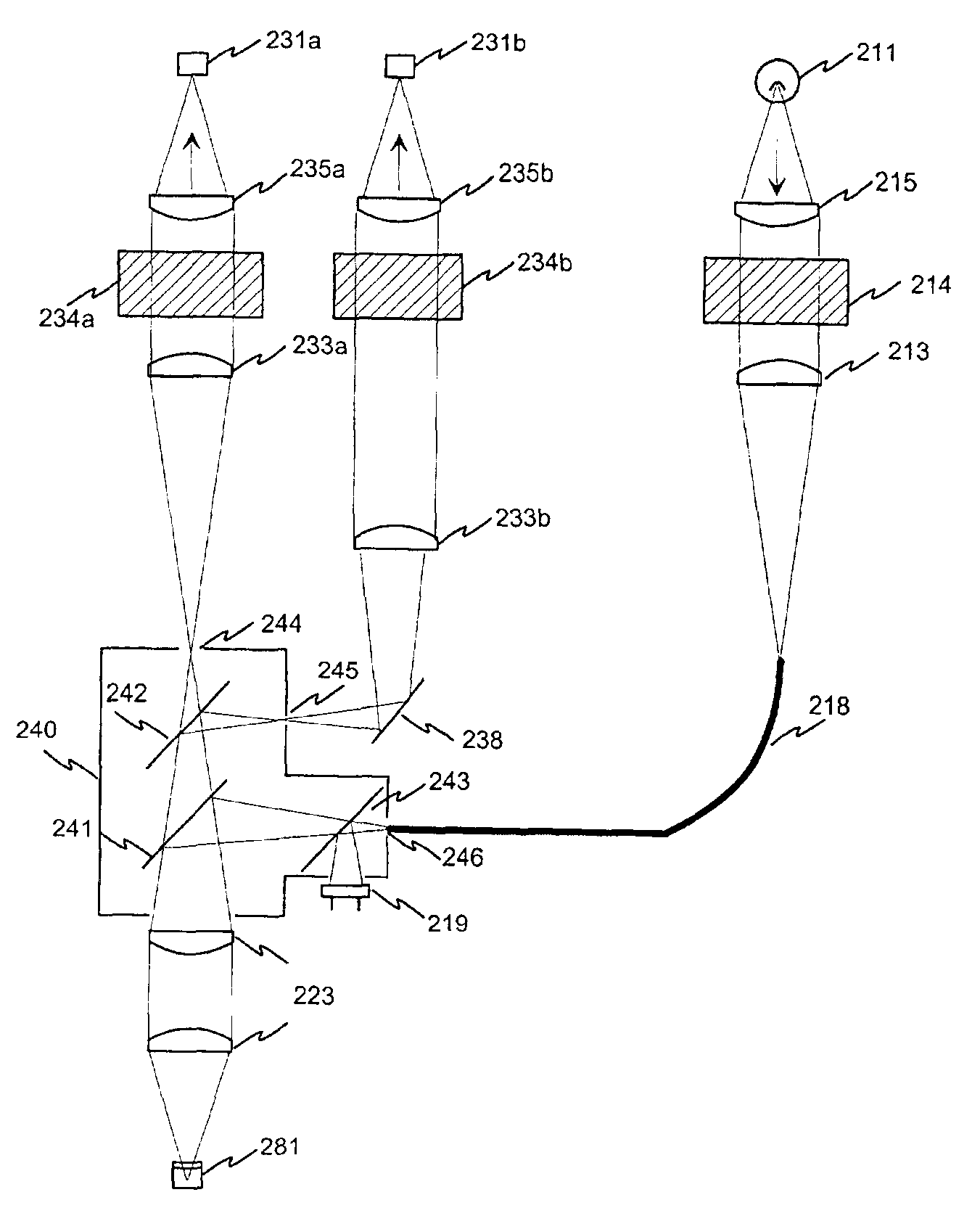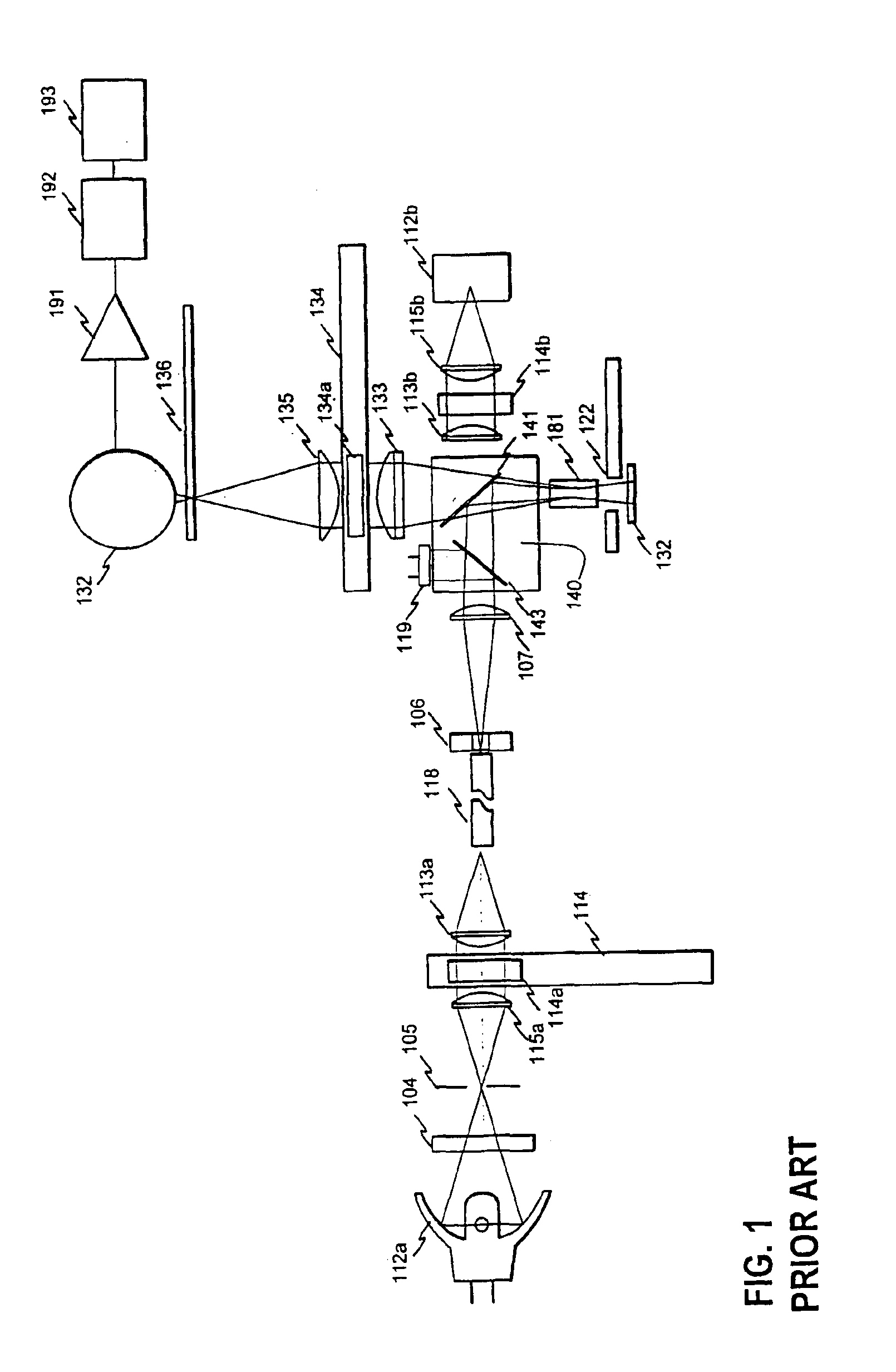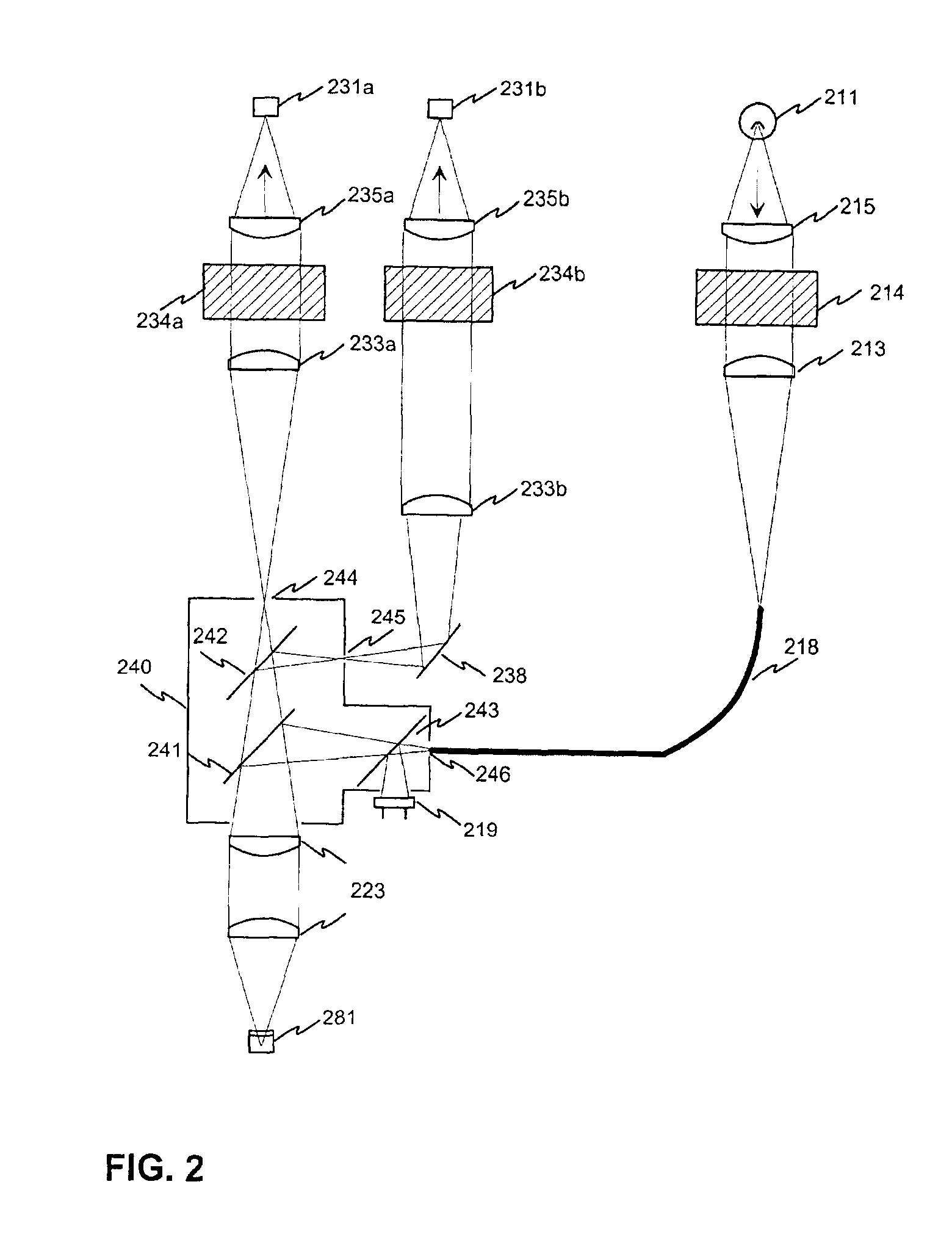Optical instrument and process for measurement of samples
a technology of optical instruments and samples, applied in the field of biochemical laboratory instruments, can solve the problems of affecting the accuracy of optical samples, and affecting the accuracy of samples, so as to avoid the attenuation caused by optical fibres, improve the accuracy of measurement, and improve the effect of measurement accuracy
- Summary
- Abstract
- Description
- Claims
- Application Information
AI Technical Summary
Benefits of technology
Problems solved by technology
Method used
Image
Examples
first embodiment
[0078]FIG. 4 illustrates performing a photoluminescence measurement with a measuring instrument according to the present invention. In this embodiment both excitation and detection is made from the above the sample using the top measurement head of the instrument. One of the possible alternative excitation sources 411 gives an excitation pulse, which is guided through an optical system 413 to an optical fibre 418. The optical system may include filters, lenses and mechanical components as was shown in FIG. 3. The excitation beam is mixed in the optical fibre and lead to the optical module 450. The excitation beam is reflected from the mirror 441 and collimated in the optical system 423 into the sample 481 on the sample plate 480 to be measured. The excitation beam provides excitation for two simultaneous measurements.
[0079]The excited sample 481 gives two emissions that are measured with detectors A and B. The emission beams are first collimated in the optical system 423, and the be...
second embodiment
[0082]FIG. 5 illustrates performing a photoluminescence measurement with a measuring instrument according to the present invention. In this embodiment both excitation and detection is made from the below the sample using the bottom measurement head of the instrument. One of the possible alternative excitation sources 511 gives an excitation pulse, which is lead to the optical module of the bottom measurement head with an optical fibre (not shown in the FIG. 5), wherein the excitation beam is mixed. The excitation beam is reflected from the mirror 551 and collimated in the optical system 563 into the sample 581 on the sample plate 580 to be measured. The excitation beam provides excitation for two simultaneous measurements, or alternatively two successive excitations with different wavelengths are made with successive excitation pulses (successive excitation is preferably used only in bottom measurements).
[0083]The excited sample 581 gives two emissions that are measured with detecto...
third embodiment
[0085]FIG. 6 illustrates performing a photoluminescence measurement with a measuring instrument according to the present invention. In this embodiment the excitation is made from the above the sample using the top measurement head, and the detection is made from below the sample using the bottom measurement head of the instrument. One of the possible alternative excitation sources 611 gives an excitation pulse, which is guided through an optical system 613 to an optical fibre 618. The optical system may include filters, lenses and mechanical components as was shown in FIG. 3. The excitation beam is mixed in the optical fibre and lead to the optical module 650. The excitation beam is reflected from the mirror 641 and collimated in the optical system 623 into the sample 681 on the sample plate 680 to be measured. The excitation beam provides excitations for two simultaneous measurements.
[0086]The excited sample 681 gives two emissions that are measured with detectors A and B. The emis...
PUM
 Login to View More
Login to View More Abstract
Description
Claims
Application Information
 Login to View More
Login to View More - R&D
- Intellectual Property
- Life Sciences
- Materials
- Tech Scout
- Unparalleled Data Quality
- Higher Quality Content
- 60% Fewer Hallucinations
Browse by: Latest US Patents, China's latest patents, Technical Efficacy Thesaurus, Application Domain, Technology Topic, Popular Technical Reports.
© 2025 PatSnap. All rights reserved.Legal|Privacy policy|Modern Slavery Act Transparency Statement|Sitemap|About US| Contact US: help@patsnap.com



